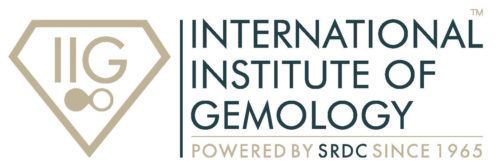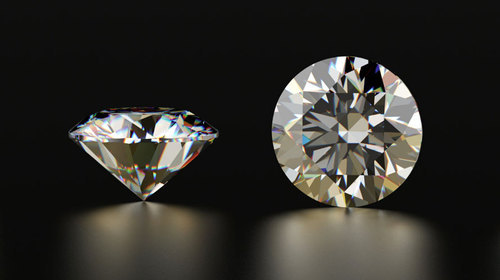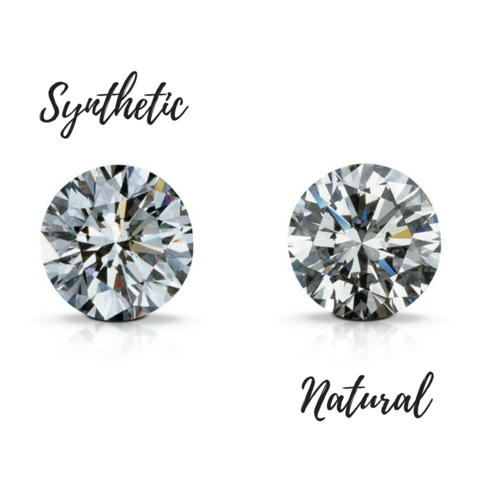|
Getting your Trinity Audio player ready...
|
CVD is another name for Synthetic Diamonds, Diamonds which are born in the laboratory and not under the earth’s crust. Yet it will have the same physical and optical properties, just like synthetic ruby and some other gemstones. In the future, I strongly believe that it will be traded as culture diamonds the same way how natural pearls and cultured pearls are traded in the Pearl industry.
Rahul Desai – Director, IIG
First, we understand the history of CVD Diamonds?
Colorless synthetic diamonds produced by Chemical Vapor Deposition (CVD) are becoming more common in the market nowadays. CVD-processed stones are much different from the natural diamonds produced in mines, They are also vastly different from the High-Pressure High-Temperature (HPHT) synthetics that have been manufactured since the mid-1950s.
The HPHT method, first used to successfully grow diamonds by General Electric in 1954, essentially mimics the natural process – carbon is crystallized as diamond through intense heat and pressure deep within the Earth. The HPHT process is very costly, given the energy and equipment required, and produces diamonds with mainly yellowish or brownish-yellow colors.
The CVD method is much less costly because it works at moderate temperatures and low pressure, which also requires smaller and less expensive equipment. Because the vacuum chamber contains only carbon and some hydrogen, colorless crystals can be grown. If nitrogen or boron is introduced into the chamber, yellow or blue synthetic diamond crystals can be produced.
What Are CVD Diamonds?
Simply put, some diamonds come from below ground and some come from above ground CVD diamonds are man-made diamonds. Unlike natural diamonds that take billions of years to form deep beneath the Earth’s surface, CVD diamonds are grown in labs. Specifically, CVD diamonds rely on a special process called Chemical Vapor Deposition (or CVD).
How Are CVD Diamonds Made?
Chemical Vapor Deposition (CVD) is a more recently developed technique by which diamonds can be grown from a hydrocarbon gas mixture. In the CVD process, a thin slice of diamond seed (often an HPHT produced diamond) is placed in a sealed chamber and heated to around 800 degrees Celsius. The chamber is then filled with a carbon-rich gas (usually methane) along with other gases. Then, the gases are ionized into plasma using microwaves, lasers, or other techniques. The ionization breaks the molecular bonds in the gases and the pure carbon adheres to the diamond seed and slowly builds up into a crystal, atom by atom, layer by layer.
Are CVD Diamonds Real Diamonds?
Real is Rare – Natural diamonds are only termed as Real, but when you compare this with the FTC Guidelines, they also covered under diamond definitions – But with DISCLOSURE, Very important to note that no one sells These CVD’s as Natural diamonds, or just as Diamonds. They have to categorically mention “SYNTHETIC or LAB GROWN DIAMONDS”
Are CVD Diamonds the same as Cubic Zirconias and moissanite?
No, CVD diamonds are not the same as cubic zirconias. CVD diamonds will have the same characteristics as natural diamonds. Cubic Zirconia will not have the same properties and hence it will not have a similar luster. The price difference is also huge, CVD will be much expensive than Cz.
Cubic Zirconia (also known as CZ) was first created in 1976 in a lab for its low cost, durability, and sparkle similar to a diamond. Cubic zirconia is a synthesized (man-made) crystalline diamond simulant mineral that is colorless, hard, and flawless. Natural Moissanite originally comes from space–created by a meteorite that fell to Earth. These crystals are composed of silicon carbide. Natural moissanite is incredibly rare, so moissanite available for purchase today is laboratory-created. Lab-created Moissanite is engineered to look similar to diamonds but is physically quite different from a true diamond.
These stimulants are not made of carbon crystals like diamonds are. Simulants sell at much lower prices than diamonds (lab-created or natural).
Can Jewellers Tell synthetic diamonds by examination with 10X loupe or microscope?
It is not possible to seperate synthetic and natural diamonds even by well experienced eyes, unless and untill it is examined by well advance diamond verification instruments / machines, Like DiamondView, DiamondSure etc. On the surface lab created diamonds have the same physical properties as natural diamonds, most jewelers would have a very difficult time identifying a lab grown diamond even under microscope.
How Fast Do CVD Diamonds Grow?
The CVD process allows carbon atoms to attach to the seed diamond layer by layer. This produces a beautiful, genuine diamond. But the process is a slow one — generally moving at a rate of 0.1-10 microns per hour, for larger surfaces (smaller surfaces grow at slower rates). Estimates vary, but it is generally considered to take about a month to grow a 1ct CVD diamond.
Are All Lab-Grown Diamonds CVD Diamonds?
Although lab-grown diamonds have been around for a while, CVD is actually a relatively new process. Before this process was introduced, labs relied on High-Pressure High-Temperature (HPHT) approach. Given the extreme conditions needed in the HPHT process — about 1500°C and approximately 1.5 million pounds of pressure per square inch — CVD offers a much more efficient method of growing diamonds. In fact, HPHT diamonds will now test as moissanite with modern diamond testers.
What Is the History of CVD Diamonds?
The first lab-grown diamond was created by General Electric back in 1955. DeBeers bought the technology and it disappeared for many years. And while the GE/DeBeers diamond was grown using the HPHT approach, it set the stage for later technological advances that would eventually lead to the creation of CVD diamonds. By the 1980s, CVD diamonds had become a reality.
Are CVD Diamonds Flawless?
You might expect a lab-grown CVD diamond to naturally turn out perfect. After all, it’s created in controlled conditions, right? But while the average CVD diamond will likely be of higher quality than the average mined diamond, CVDs still exhibit a range of quality. This is because lab-conditions are essentially the same processes that produce diamonds in nature. And like natural diamonds, there’s a certain amount of randomness that tends to crop up.
As such, once a CVD diamonds have finished growing, they are subjected to the same certification process used in grading mined diamonds. The diamonds’ color, cut, clarity, and carat (the 4 Cs) are all measured and graded by qualified diamond certification labs, and each diamond is given an overall grade.
Are CVD Diamonds Expensive?
When it comes to cost, everything is relative. So, when we say that CVD diamonds are inexpensive, what we’re really saying is that they generally cost less than mined diamonds — about 50-70% less. So, for what you’d pay for a 1.25-carat mined diamond, you could instead upgrade to a 2-carat CVD diamond. Also, it will be the most sustainable option that can be produced in huge quantities, and as the supply increases the prices are likely to fall furthermore in the future if the same carats of demands are not generated by the Lab-grown industry. But that’s not to say that CVD diamonds aren’t valuable, because they certainly are. These are lab-grown diamonds, and there is also huge investment and technology cost involved.
“Cultured Diamonds” much like concept as “Cultured Pearls”
The parallels between cultured pearls and cultured diamonds are precise. A lab-grown diamond requires a crystalize diamond seed to grow, just like a seed is manually placed in an oyster to grow a cultured pearl. “Much like the concept of cultured pearls has been widely adopted and accepted by mainstream consumers as simply ‘pearls,’ lab-grown/cultured diamonds are headed in the same direction. So maybe in the future when the supply of this CVD & HPHT diamonds will increase tremendously, as there is no stoppage to technology advancement, We can listen to the term like “CULTURED DIAMONDS” As we all know in pearl industry about 99% of all pearls sold today are cultured.
Are CVD Diamonds Right For Me?
This is the puzzle one has to solve by own, Ask your heart and surely you will get the answer! But for the price-conscious people, it is a sustainable and reasonably cheaper option compared to natural diamonds.






